Ditapis dengan
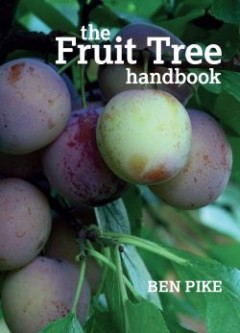
The Fruit Tree Handbook
The Fruit Tree Handbook is a clear, practical guide for both amateur and expert, conveying a deep respect for the natural world and showing how to cultivate healthy trees through good management. Apples, pears, plums, cherries, apricots, peaches and nectarines, as well as less common fruits such as mulberries, medlars and figs, are covered in detail, with recommended varieties of each. The Frui…
- Edisi
- -
- ISBN/ISSN
- 978-1-900322-74-4
- Deskripsi Fisik
- 353 hlm.
- Judul Seri
- -
- No. Panggil
- -
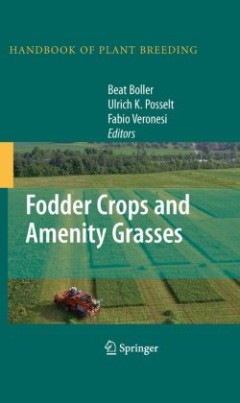
Fodder Crops and Amenity Grasses
Grassland farming in Europe was already established during the settlement of the rst farmers together with their domesticated animals after the last ice age. Since then, grassland provides the forage basis to feed ruminant animals for the p- duction of meat and milk. Depending on the ecological conditions and intensity of usage, various plant communities with different species developed, displa…
- Edisi
- -
- ISBN/ISSN
- 978-1-4419-0760-8
- Deskripsi Fisik
- 526 hlm.
- Judul Seri
- Handbook of Plant Breeding 5
- No. Panggil
- -
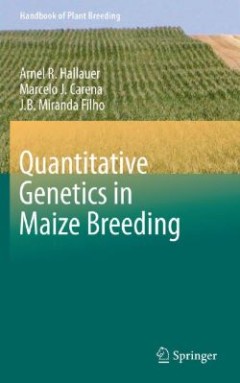
Quantitative Genetics in Maize Breeding
Quantitative Genetics in Maize Breeding Public investment in maize breeding from 1865 to 1996 was $3 billion (Crosbie et al., 2004) and the return on investment was $260 billion as a consequence of applied maize breeding, even without full understanding of the genetic basis of heterosis. Quantitative genetics has allowed the integration of prebreeding with cultivar development by characterizing…
- Edisi
- -
- ISBN/ISSN
- 978-1-4419-0766-0
- Deskripsi Fisik
- 680 hlm.
- Judul Seri
- Handbook of Plant Breeding 6
- No. Panggil
- -
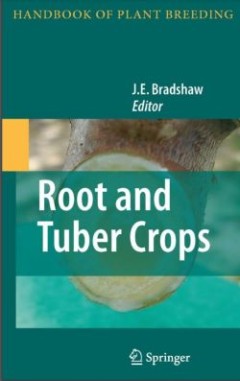
Root and Tuber Crops
It is important to include Tuber and Root Crops in the Handbook of Plant Breeding. They include starchy staple crops that are of increasing importance for global food security and relief of poverty, important millennium goals for the United Nations. Indeed, 2008 was the UN International Year of the Potato in recognition of this role of the potato as the world’s third most important food crop …
- Edisi
- -
- ISBN/ISSN
- 978-0-387-92765-7
- Deskripsi Fisik
- 310 hlm.
- Judul Seri
- Handbook of Plant Breeding 7
- No. Panggil
- -
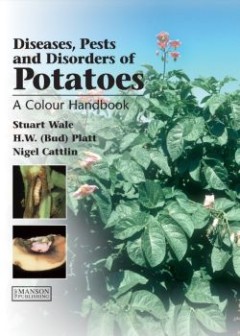
Diseases, Pests and Disorders of Potatoes: a Colour Handbook
Covering the most important pathogens, this handbook provides clear, concise descriptions of the symptoms and cycles of diseases and disorders, and the pests that commonly prey on potato crops, their distribution and importance, and advice on their control. The text is illustrated with some 235 superb color photographs of affected crops to aid in the rapid and accurate identification of disease…
- Edisi
- -
- ISBN/ISSN
- 978-1-84076-021-7
- Deskripsi Fisik
- 177 hlm.
- Judul Seri
- -
- No. Panggil
- -
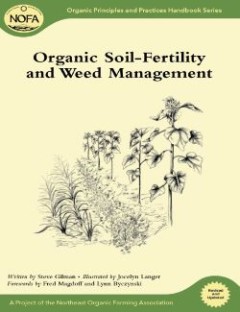
Organic Soil-Fertility and Weed Management
Soil is a living organism that loves to cooperate with farmers and gardeners. A green thumb will appear on those who align themselves with its health and requirements. This book discusses: Soil habitat, Sustaining soil fertility, The soil food-web, Nutrient availability and deficiency.
- Edisi
- -
- ISBN/ISSN
- 978-1-603-58360-2
- Deskripsi Fisik
- 157 hlm.
- Judul Seri
- Organic Principles and Practices Handbook
- No. Panggil
- -
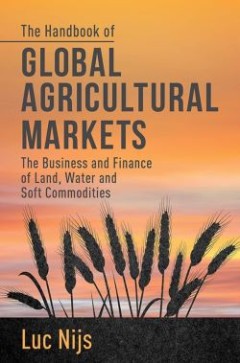
The Handbook of Global Agricultural Markets: The Business and Finance of Land…
This book is a one-stop reference for practitioners and academics in finance, business and economics, providing a holistic reference to the international agriculture business. It takes a multidisciplinary approach, looking at the issues, opportunities and investable themes in the global agricultural space, combining research and practical tools.
- Edisi
- -
- ISBN/ISSN
- 978-1-137-30234-2
- Deskripsi Fisik
- 603 hlm.
- Judul Seri
- -
- No. Panggil
- -
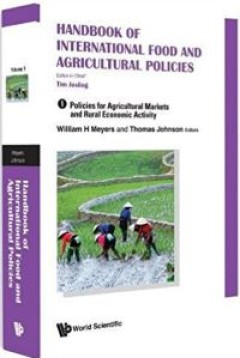
Handbook of International Food and Agricultural Policies I: Policies for Agri…
Handbook of International Food and Agricultural Policies is a three-volume set that aims to provide an accessible reference for those interested in the aims and implementation of food and farm policies throughout the world. The treatment is authoritative, comprehensive and forward looking. The three volumes combine scholarship and pragmatism, relating academic writing to real-world issues faced…
- Edisi
- -
- ISBN/ISSN
- 978-9-813-22628-9
- Deskripsi Fisik
- 1210 hlm.
- Judul Seri
- -
- No. Panggil
- -
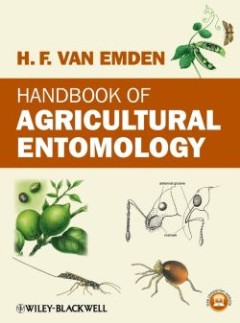
Handbook of Agricultural Entomology
Handbook of Agricultural Entomology by Helmut van Emden is a landmark publication for students and practitioners of entomology applied to agriculture and horticulture. It can be used as a reference and as a general textbook. The book opens with a general introduction to entomology and includes coverage of the major insects (and mites) that cause harm to crops, livestock and humans. The importa…
- Edisi
- -
- ISBN/ISSN
- 978-1-118-46959-0
- Deskripsi Fisik
- 331 hlm.
- Judul Seri
- -
- No. Panggil
- -
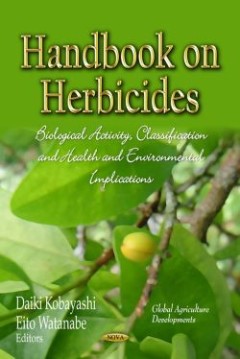
Handbook on Herbicides: Biological Activity, Classification and Health Enviro…
In this handbook, the authors present current research in the study of the biological activity, classification and health, and environmental implications of herbicides. Topics discussed include productive degradation of dichlorprop by transconjugant strains; weeds and their mechanisms of resistance to herbicides; application of 31P-NMR spectroscopy to glyphosate studies in plants; lethal and su…
- Edisi
- -
- ISBN/ISSN
- 978-1-62948-053-4
- Deskripsi Fisik
- 333 hlm.
- Judul Seri
- Global Agricultural Developments
- No. Panggil
- -
 Karya Umum
Karya Umum  Filsafat
Filsafat  Agama
Agama  Ilmu-ilmu Sosial
Ilmu-ilmu Sosial  Bahasa
Bahasa  Ilmu-ilmu Murni
Ilmu-ilmu Murni  Ilmu-ilmu Terapan
Ilmu-ilmu Terapan  Kesenian, Hiburan, dan Olahraga
Kesenian, Hiburan, dan Olahraga  Kesusastraan
Kesusastraan  Geografi dan Sejarah
Geografi dan Sejarah